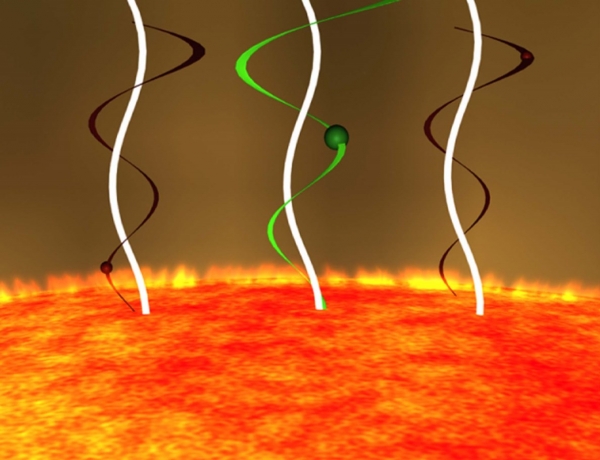
Solar wind, a phenomenon that puzzled scientists when it was discovered in 1962, sweeps through the solar system at 2 million miles an hour much like a surfer riding a wave. In this NASA photo illustration, the waves in the Sun’s atmosphere are produced by vibrating solar magnetic field lines (indicated by the white lines), which give solar wind particles a push just like an ocean wave gives a surfer a ride.
The equatorial electrojet might not make compasses needles spin wildly, but according to scientists this unearthly force is suspected of messing with electrical grids near the equator. This current of electrons and ions is localized in Earth’s ionosphere, at around 60 miles (100 km) above the ground.
New research shows that when a solar wind shock wave hits the Earth, the equatorial electrojet can suddenly amp up and create localized magnetic storms. This is just smaller versions of the large geomagnetic storms knocking out power grids and damaging pipelines under the aurora-lit skies of higher latitudes.
This newly discovered phenomenon Is like a “Bermuda Triangle in space”, according to scientists. Even if there might not be U.F.O.s crashing in it, it creates a region of space where satellites shut down, telescopes can’t function and computers crash.
According to Brett Carter, a space physicist at RMIT University’s SPACE Research Center in Australia, Earth’s magnetic field acts like an umbrella. When the “wind changes the umbrella also flops around”. The most sensitive places to these abrupt solar wind changes are near high latitudes and the equator.
Carter added that these are not doomsday-style events. However, the idea of space weather affecting the ground on Earth so far away from the poles is rather new. Carter is the lead author of a paper reporting the new discovery in the journal Geophysical Research Letters.
The research team discovered the equatorial electrojet’s tendency to act up when hit by interplanetary waves by analyzing 14 years of ionospheric data from around the world. The current can be amplified by even small interplanetary shock waves, according to Carter and his colleagues.
When the equatorial electrojet is encountering these shock waves in the region of ionosphere where sun’s magnetic field is encountering Earth’s magnetic field, strange phenomena may occur even if the shock waves that are too weak to trigger high latitude geomagnetic storms.
According to the new findings, the equatorial space weather might rev up a lot more frequently than at high latitudes. The more frequent magnetic storms from the equatorial electrojet could be causing problems in pipelines and electrical grids in places like South America, Africa, southern India and Southeast Asia, inform the researchers.
Originally posted 2015-10-30 04:32:22. Republished by Blog Post Promoter













